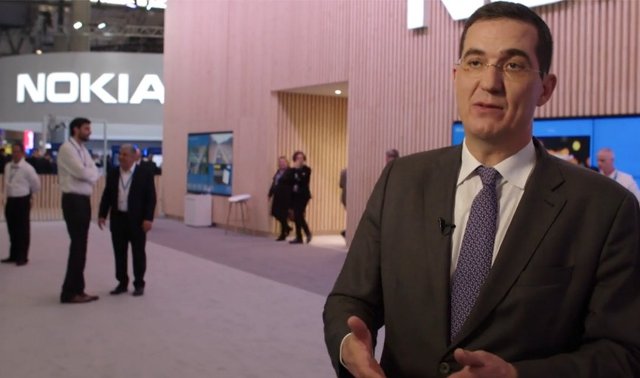 Telecom equipment maker Nokia introduced several innovative broadband solutions for telecom operators ahead of the Broadband World Forum 2017.
Telecom equipment maker Nokia introduced several innovative broadband solutions for telecom operators ahead of the Broadband World Forum 2017.
Nokia is presenting these new broadband solutions that will bring intelligent access to the network and help operators to deliver more bandwidth to more people through an expanded portfolio of ultra-broadband technologies and services across fiber, DSL, cable and wireless.
Telecoms can deliver a gigabit experience to and into every home with carrier-grade meshed Wi-Fi solutions that enhance in-home connectivity helping operators deliver new services that provide an unmatched in-home user experience.
Intelligent Access solution
Nokia’s Intelligent Access solution provides a set of deployment options — across fiber, DSL, cable, and now fixed wireless access — for connecting and ensuring the success of operator business cases.
“Intelligent Access unlocks whole-home Wi-Fi which is critical to enabling a gigabit experience. It delivers virtualization elements which will be key to automate, simplify, scale the network, and deliver new capabilities,” said Erik Keith, principal analyst at GlobalData.
SDAN solution
Nokia said its Software-Defined Access Network (SDAN) solution delivers a comprehensive set of cloud-native software, open programmable hardware and automated operations that drive real world use cases with benefits.
Nokia said SDAN enables operators to build pragmatic solutions and avoid vendor lock-in.
SDAN enables operators to manage cost and complexity and renew their ability to scale. Nokia SDAN brings value to operators – such as network slicing,virtual access networks, data center practices, wavelength mobility, cloud-based provisioning, automated operations and edge cloud architectures to enable 5G and IoT applications.
Nokia has already conducted more than 30 SDAN trials with du, nbn, and SK Telecom, among others.
Unified Cable Access solution
Cable operators can select Nokia’s Unified Cable Access solution — based on virtualize cable modem termination system (vCMTS) — for implementing vDAA through a simple configuration option.
The virtualized solution gives cable operators the flexibility to deploy both R-PHY and R-MACPHY devices within the same network and easily switch from one to the other based on their network requirements and strategic direction.
Cable operators are using Distributed Access Architecture (DAA) to increase throughput, reduce costs and accelerate the delivery of new services by moving cable access layer functions that are traditionally placed in the headend and hub sites to the access nodes.
To date, cable operators have had to choose between two DAA approaches: R-PHY, which moves only the DOCSIS signal generation (PHY) to the access node; and R-MACPHY, which moves both the PHY and DOCSIS processing (MAC) to the access node.
Cable operators do not have the flexibility to deploy the best technology for each use case because many operators are forced to lock in a decision before understanding the potential impact on their network. Nokia’s Unified Cable Access solution enables operators to choose between R-PHY and R-MACPHY.
“Virtualizing the DAA not only simplifies the network and drives cost savings, it also allows us to accelerate the delivery of new services that ultimately provide a better customer experience,” said Cash Hagen, chief operations officer of WOW! Internet, Cable & Phone.
In-home Wi-Fi solution
Nokia’s latest in-home Wi-Fi solution allows operators to deliver new gigabit connectivity services and reduce customer churn that can result from poor Wi-Fi connections.
Nokia uses Broadcom’s BCM4363 WLAN chipset with Air-IQ technology for analyzing and avoiding interference effects. Air-IQ helps to minimize connectivity issues, reducing the associated helpdesk costs and number of truck rolls required for a service provider.
The Nokia Wi-Fi gateways can identify as much as seventeen different interference sources occurring at 2.4 GHz or 5 GHz, outperforming any current product on the market, which typically detects about four. Supported y Air-IQ, the Nokia wireless gateways can choose the best channel of operation or band, steering devices to avoid disruptive interference.
Wireless PON solution
Nokia said its wireless PON solution integrates WiGig technology in a Passive Optical Network (PON), allowing operators to wirelessly bring gigabit services to end customers and accelerate Fiber-to-the-home (FTTH) deployments.
The company’s new Fiber and DSL deployment options include outdoor and data center fiber nodes, a 212Mhz reverse power G.fast solution and DSL backhaul remote nodes.
“Nokia is providing operators with a smarter approach to fixed access that combines the intelligent application of technology with the intelligence of the network to help make broadband networks faster, better and smarter,” said Federico Guillen, president of Nokia’s Fixed Networks Business Group.





